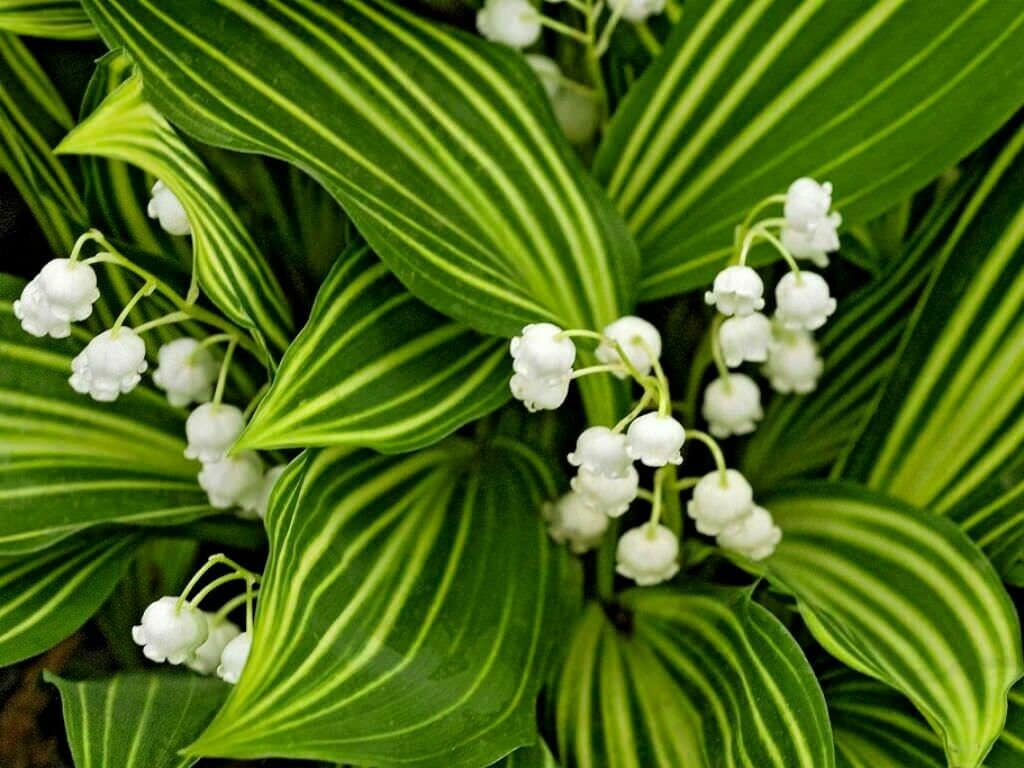The Gorgeous Variegated Lily of the Valley: A Jewel for Shady Gardens
The lily of the valley holds a special place in many a gardener’s heart This classic woodland perennial captivates with its delicate white bells and intoxicating fragrance However, the normal green-leafed variety can get lost in the shadows of other plants. This is where the variegated lily of the valley truly shines!
With striking striped foliage and a vigorous spreading habit, these beauties light up dark corners and provide a perfect backdrop for those charming flowers In this article, we’ll explore what makes variegated lily of the valley so special and share insider tips for growing and enjoying this fantastic perennial.
An Introduction to Variegated Lily of the Valley
Let’s start with an overview of this eye-catching plant:
Botanical Name: Convallaria majalis ‘Albostriata’
Also Known As: Lily of the valley ‘Albostriata’, C. majalis ‘Striata’, C. majalis ‘Variegata’
Plant Type: Herbaceous perennial
Key Features: White bell-shaped blooms in spring above lush striped leaves
Size: Grows 6 to 8 inches tall and spreads readily
Ideal Conditions: Part to full shade, moist well-drained soil
What Makes Variegated Lily of the Valley Special?
There are a few key traits that make variegated lily of the valley really stand out:
-
The Foliage: Each leaf has captivating vertical stripes in green and creamy white. This bright variegation enlivens shady areas.
-
Vigorous Spread: It spreads readily via underground rhizomes to quickly form a lush carpet of striped leaves.
-
Sweet Fragrance: The nodding bell flowers release a gentle, lovely scent in mid to late spring.
-
Easy Care: Once established, lily of the valley is low maintenance, trouble-free, and deer/rabbit resistant.
Growing Variegated Lily of the Valley
Follow this advice for successfully cultivating variegated lily of the valley:
-
Site: Select part to full shade with rich moist soil. Provide space for colonies to spread. Woodland gardens or shade borders are ideal.
-
Soil Prep: Enrich soil with compost or leaf mold before planting. Good drainage is essential.
-
Planting: Set rhizomes 1-2 inches deep and 4-6 inches apart in spring or fall. Water well after planting and mulch.
-
Care: Keep soil evenly moist. Apply a fresh layer of compost around plants each year. Remove spent flowers to encourage reblooming. Divide congested patches every 2-3 years.
-
Patience: Allow 2 seasons of growth before harvesting flowers so colonies can establish.
Tips for Healthy Variegated Lily of the Valley
Here are some additional useful tips:
-
Contrasting Companions: Site near ferns or hostas with different foliage to make the striped leaves pop.
-
Deadheading: Clip back flower stems after blooming to maintain vigor. Leave foliage intact.
-
Fertilizer: Apply organic fertilizer or compost in early spring.
-
Watering: Supply extra water during dry spells to keep soil consistently moist.
-
Division: Rejuvenate overcrowded patches by dividing and replanting the rhizomes every few years.
-
Spring Cleanup: Remove old leaves and stems before new growth emerges.
Potential Problems and Solutions
While generally robust, variegated lily of the valley can experience a few issues:
-
Poor Flowering: Insufficient light, overcrowding, or overpicking flowers limits blooming.
-
Leaf Scorch: Drought stress causes foliage to brown on edges. Maintain even soil moisture.
-
Reverted Leaves: Foliage reverts to solid green if light is too low. Relocate to a brighter spot.
-
Rust: Reddish spots on leaves. Improve air circulation and promptly remove affected foliage.
-
Leaf Spot: Small brown spots on leaves are mostly cosmetic. Prune affected leaves and avoid overhead watering.
Fantastic Uses for Variegated Lily of the Valley
This versatile perennial can be used in many ways:
-
Ground Cover: Allow it to spread as an attractive flowering carpet in shady beds, woodlands, and natural areas.
-
Edging: Use along garden paths, foundations, and under trees or shrubs where the foliage will stand out.
-
Underplanting: Let it carpet around spring bulbs like tulips or under roses and shrubs.
-
Cut Flowers: Snip blooms to add fragrance to bouquets and arrangements.
With the proper care, the jewel-like foliage and sweet scent of variegated lily of the valley will delight gardeners for years. We hope these tips help you successfully grow this wonderful classic perennial. Let it spread its charm through your own shady corners!

Convallaria ‘Albostriata’ and wildlife
Convallaria ‘Albostriata’ is known for attracting bees. It has nectar/pollen rich flowers.
Pieris Japonica – Lily of the Valley Love!
FAQ
Where is the best place to plant lily of the valley?
Grow lily of the valley in moist but well drained soil in full or partial shade. It grows well under trees and is ideal for woodland and cottage gardens – particularly for large gardens as it can be a vigorous spreader. In smaller gardens, lily of the valley can be grown in containers.
How invasive is lily of the valley?
It has been planted extensively as an ornamental. Where it has escaped cultivation and spread into natural areas it can be invasive. It can spread by seed and rhizomes.
What if I touch lily of the valley?
Not only is Lily of the Valley delicate and majestic, it is also highly poisonous. It is considered to have a high level of toxicity that can even be fatal if it is eaten. If the flower is touched and then transferred onto the skin, it can cause irritation and tightness in the chest.
How fast does lily of the valley spread?
Lily of the valley spreads relatively quickly, particularly by rhizomes, forming dense colonies. It can spread aggressively, so it’s often recommended to plant it in containers or restricted areas to prevent it from overtaking other plants.
